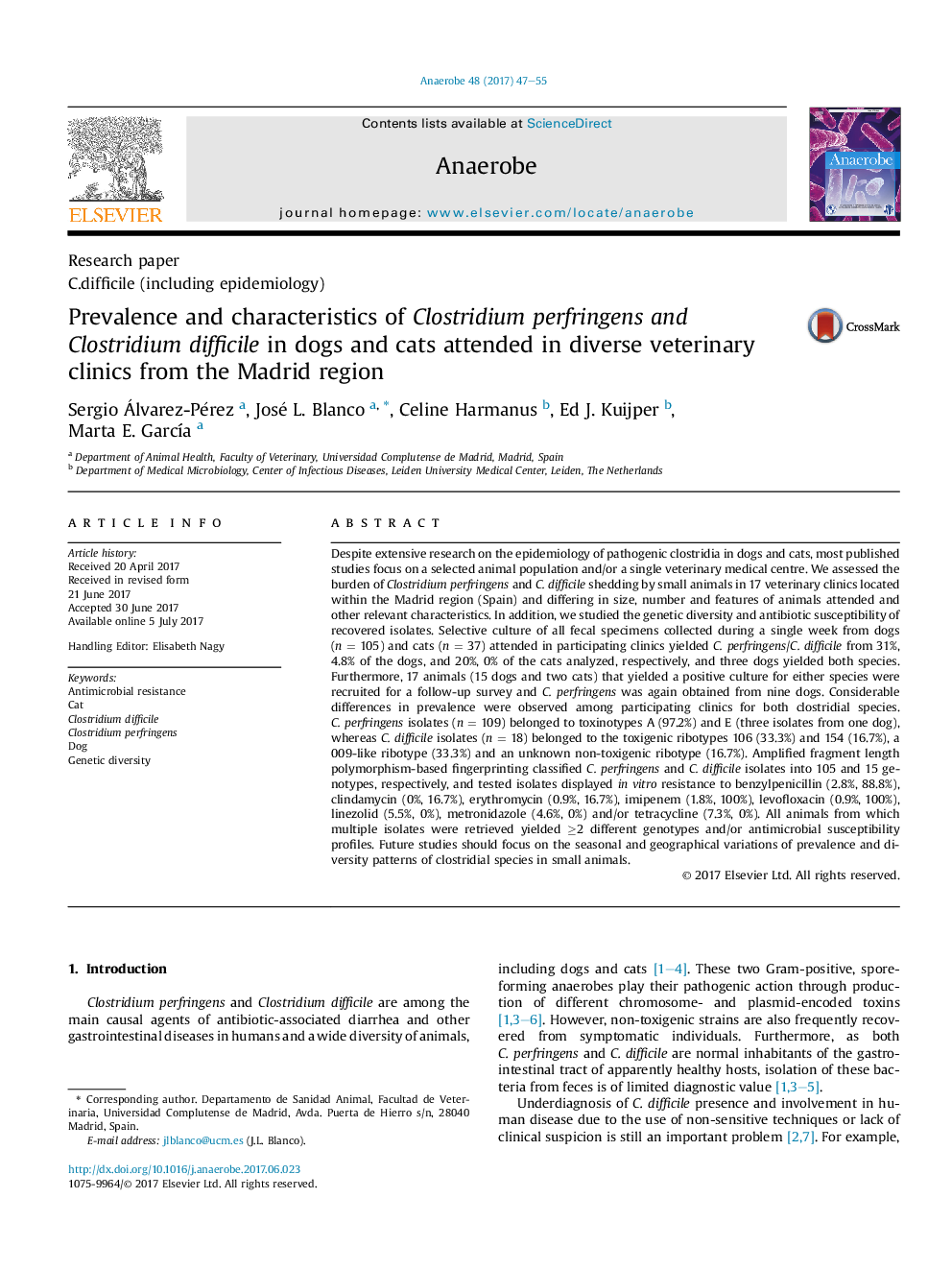| کد مقاله | کد نشریه | سال انتشار | مقاله انگلیسی | نسخه تمام متن |
|---|---|---|---|---|
| 5671343 | 1592816 | 2017 | 9 صفحه PDF | دانلود رایگان |

- First study of the prevalence of C. perfringens (CP) and C. difficile (CD) shedding by dogs and cats in Madrid (Spain).
- Remarkable differences in prevalence were observed among 17 veterinary clinics for both clostridial species.
- High diversity of genotypes and antimicrobial susceptibility profiles was found among CP and CD isolates.
- Some CD genotypes that have caused outbreaks of human disease were identified (e.g. ribotype 106).
Despite extensive research on the epidemiology of pathogenic clostridia in dogs and cats, most published studies focus on a selected animal population and/or a single veterinary medical centre. We assessed the burden of Clostridium perfringens and C. difficile shedding by small animals in 17 veterinary clinics located within the Madrid region (Spain) and differing in size, number and features of animals attended and other relevant characteristics. In addition, we studied the genetic diversity and antibiotic susceptibility of recovered isolates. Selective culture of all fecal specimens collected during a single week from dogs (n = 105) and cats (n = 37) attended in participating clinics yielded C. perfringens/C. difficile from 31%, 4.8% of the dogs, and 20%, 0% of the cats analyzed, respectively, and three dogs yielded both species. Furthermore, 17 animals (15 dogs and two cats) that yielded a positive culture for either species were recruited for a follow-up survey and C. perfringens was again obtained from nine dogs. Considerable differences in prevalence were observed among participating clinics for both clostridial species. C. perfringens isolates (n = 109) belonged to toxinotypes A (97.2%) and E (three isolates from one dog), whereas C. difficile isolates (n = 18) belonged to the toxigenic ribotypes 106 (33.3%) and 154 (16.7%), a 009-like ribotype (33.3%) and an unknown non-toxigenic ribotype (16.7%). Amplified fragment length polymorphism-based fingerprinting classified C. perfringens and C. difficile isolates into 105 and 15 genotypes, respectively, and tested isolates displayed in vitro resistance to benzylpenicillin (2.8%, 88.8%), clindamycin (0%, 16.7%), erythromycin (0.9%, 16.7%), imipenem (1.8%, 100%), levofloxacin (0.9%, 100%), linezolid (5.5%, 0%), metronidazole (4.6%, 0%) and/or tetracycline (7.3%, 0%). All animals from which multiple isolates were retrieved yielded â¥2 different genotypes and/or antimicrobial susceptibility profiles. Future studies should focus on the seasonal and geographical variations of prevalence and diversity patterns of clostridial species in small animals.
Journal: Anaerobe - Volume 48, December 2017, Pages 47-55